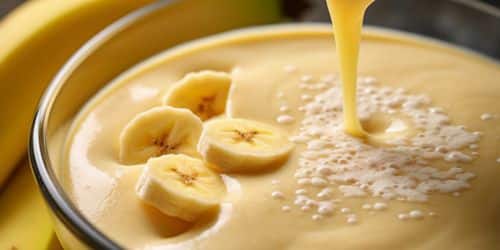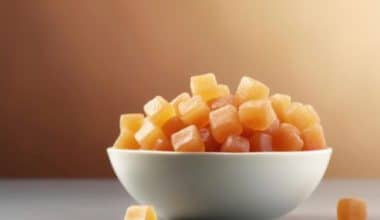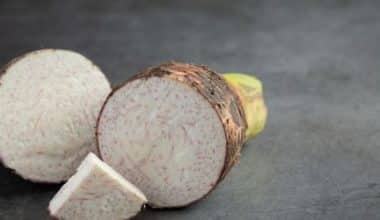Custard is a popular food all around the world, so making it is a profitable business. Furthermore, custard powder manufacture requires a low initial cost and may be started in Nigeria from the comfort of your own home.
Starting a custard powder manufacturing business needs a significant amount of effort, devotion, and, most importantly, enthusiasm.
If you’re wondering how to sell custard powder or how to sell custard powder online, this page will teach you all you need to know.
What is Custard Powder
Custard powder is a fine-textured, starch-based powder used in the preparation of custard dishes. Custard powder’s scientific term is “custard powder.” When combined with milk and sugar, it produces a creamy and smooth custard by combining cornstarch, vanilla flavoring, and food coloring. Custard powder is a common component in many Nigerian and African households since it is simple to create and can be used in a variety of sweets.
What is the Custard Powder Production Business in Nigeria About?
The process of manufacturing a fine-textured, starch-based powder used to produce custard desserts is known as custard powder manufacture. Custard powder’s scientific term is “custard powder.” Cornstarch, vanilla flavoring, and food coloring are combined to create a smooth and creamy powder that is used to make custard.
To begin a custard powder manufacture business in Nigeria and Africa, market demand and competition should be researched. This will aid in determining the best site and production scale. Depending on availability and cost, raw materials might be supplied from local farms or imported.
The yield after farming is determined by the size of the production scale and the quality of the raw materials used. To maintain the quality of the custard powder, proper storage and packaging are also required.
Due to the huge need for custard powder in households and the food sector, a custard powder production firm in Nigeria and Africa has the potential for significant profitability. The company can prosper and perhaps grow in other African countries with good planning and execution.
Why Go into Custard Powder Production Business?
An entrepreneur might get various benefits from the custard powder manufacture business. These advantages include the following:
#1. Profit is assured
As previously stated, profits from custard powder production are guaranteed. Custard is consumed by virtually everyone, and its popularity develops on a daily basis.
#2. Making custard powder is simple.
Unlike most manufacturing industries, custard powder manufacture is almost stress-free. It will be easier if you are familiar with the custard production procedure.
#3. The market is massive.
Every day, millions of people around the world consume custard. Consider the market reach.
#4. Requires a small amount of capital
The manufacturing of custard powder requires little capital. Production can begin anywhere and does not require any equipment to begin. Yes, you can easily make custard powder at yourself.
Did I mention how easy it is to find raw materials? Edible maize, egg yellow, sodium benzoate, and other components in custard powder are readily available. You can even go to your local grocery store and get ingredients at a reasonable price.
Types of Custard Powders in Nigeria
In Nigeria, various forms of custard are used to make custard powder. Among the most prevalent varieties are:
- Custard made from cornstarch: This form of custard is popular in Nigeria and other regions of Africa. It is gluten-free and good for those suffering from celiac disease or gluten intolerance.
- Wheat-based custard: Made from wheat flour, this form of custard is popular in the United Kingdom and other parts of Europe. It includes gluten and is therefore not suited for persons suffering from celiac disease or gluten intolerance.
- Tapioca-based custard: This form of custard is popular in various parts of Africa and is made from tapioca starch. It is gluten-free and good for those suffering from celiac disease or gluten intolerance.
- Soy-based custard: Made from soy flour, this type of custard is a fantastic source of protein for vegetarians and vegans.
- Coconut milk-based custard: Made from coconut milk, this form of custard is popular in regions of Africa and Asia. It is dairy-free and acceptable for those who are lactose intolerant.
How to Start a Custard Powder Production Business
Starting a custard powder factory in Nigeria necessitates a few steps in order to be successful. Among the first steps you should take are:
#1. Develop a Business Plan
A business plan is a necessary document before establishing any firm. So, set down your company’s mission, objectives, goals, and methods for success. Analyze the associated costs and financing possibilities to help guide you and boost your confidence.
#2. Select a Business Name and Apply for Licenses
When selecting a business name, choose one that is distinctive to your custard powder product. To avoid creating substandard products, research permissions and licenses essential to the custard production industry and register your business with the proper food regulatory offices.
#3. Learn About Custard Powder Production
Did you know that the market for custard powder is extremely competitive? To be a brand, you must strive to provide the greatest product possible. You will need to learn how to mix, weigh, and dry raw materials, as well as packaging and sealing processes.
The good news is that you can readily obtain the information you require to guide you via self-help DVDs, or you can intern for a fee at a custard powder production business before getting started.
#4. Find a Location and Set Up
The next step is to establish your manufacturing facility. Consider road accessibility and cleanliness while deciding on a place. Your custard powder manufacturing plant must meet food production company health and safety regulations.
Also, obtain the essential equipment and keep it free of hazardous situations that could endanger the health of your potential customers.
#5. Find your unique flavours and turn them into your Unique Selling Proposition (USP).
Custard powder is available in a variety of tastes (vanilla, banana, etc.). Experiment with these flavours to create custard powder variants that will become your unique selling point. Remember that the custard powder manufacturing industry is competitive since most people have learned that it is profitable. So, if you want to generate a profit, you must ensure that your brand is distinct.
#6. Select Your Packaging
People are more likely to purchase a product they admire. You must employ appealing packaging for your custard product in order to attract buyers. You can use plastic containers and nylon to meet each customer’s budget and needs, and don’t forget to include your contact information on the packing; it may help you land new business.
#7. Employ marketing and advertising
If you want to sell your custard powder, you must promote it after you manufacture it. If you must sell to your target market, you must investigate trends associated with them and advertise your product in places where they are likely to see it. Social media is an excellent way to reach a big audience, but door-to-door marketing and promotional sales would also be beneficial. Remember, the goal is to persuade them to try your product and return back for more.
How to Produce and Package Custard Powder in Nigeria
Processing and packaging are critical stages in the custard powder manufacturing process, as they ensure that the end product is of excellent quality, safe for use, and appealing to consumers. In Nigeria and Africa, the following are step-by-step instructions for preparing and packing custard powder:
- Cleaning: To remove impurities, raw materials such as corn starch, flavoring, and coloring agents should be carefully washed and sifted.
- Mixing: Combine the components in the correct proportions, and gradually add water until a homogeneous paste forms.
- Drying: The custard paste is then uniformly spread on trays and dried in a hot air oven or sun-dried until dry and crumbly.
- Milling: Using a grinding machine, the dry custard is milled to a fine powder.
- Sieving: To remove any lumps or contaminants, the powdered custard is sieved.
- Packaging: The custard powder is then packaged in various sizes of airtight containers or sachets and branded with the relevant information such as brand name, nutritional information, and usage directions.
- Storage: To prevent moisture absorption and spoilage, store the packaged custard powder in a cold, dry, and aired environment.
- Distribution: The finished product is subsequently sold to consumers through merchants, supermarkets, and distributors.
Challenges of the Custard Powder Production Business in Nigeria
Every entrepreneur faces one or more challenges when establishing a new business, and starting a custard powder production firm is no exception. Some of the obstacles that can be avoided are as follows:
- Inadequate power supply: Power interruptions are common in Nigeria and Africa, disrupting production processes and causing losses in custard powder manufacturing enterprises.
- High manufacturing costs: The cost of raw materials, labour, and other expenses contribute to the high production costs.
- Inefficient transportation system: Poor road networks, traffic congestion, and other transportation issues can cause finished items to be delivered to clients late, resulting in losses.
- Inadequate storage facilities: To preserve the quality and freshness of the custard powder, proper storage facilities are essential. Inadequate storage facilities can cause rotting, resulting in losses.
- Limited access to finance: Access to capital is critical for expanding and scaling up a business, but many custard powder-producing enterprises in Nigeria and Africa experience difficulties in obtaining finance from banks and other financial organizations.
- Competition: The custard powder business is highly competitive, and new entrants may find it difficult to compete with existing brands.
- Lack of skilled personnel: The custard powder production industry requires skilled labor, yet skilled people are in short supply in Nigeria and Africa.
- Inadequate market research: Many custard powder manufacturing companies do not undertake adequate market research, which can result in poor product development, inefficient marketing tactics, and low sales.
Types of Equipment Used to Produce, Package & Supply Custard Powder in Nigeria
Depending on the amount of production, the equipment used for processing, packing, and supplying custard powder in Nigeria and Africa may vary. Here is a list of some of the most commonly used industry equipment:
- Dryer: A machine that is used to dry the custard powder mixture after it has been processed.
- Milling machine: This equipment is used to mill corn into flour for the creation of custard powder.
- Mixing tank: This is where the corn flour is combined with other components such as sugar, milk powder, and flavoring.
- Packaging machine: This machine is used to package custard powder into sachets or containers.
- Weighing scale: used to determine the correct amount of ingredients needed to make custard powder.
- Sealing machine: A machine used to seal sachets or containers once they have been packaged.
- Conveyor belts: These are used to deliver custard powder to various processing and packaging processes.
- Industrial oven: Used to dry large quantities of custard powder.
- Stainless steel storage tanks: These are used to hold the custard powder prior to packing and distribution.
- Labelling machine: A machine that is used to label boxed custard powder with product information and branding.
What is the Raw Material for Custard Powder?
Custard is a powdered food with a fine texture created from maize starch. The maize starch required to make custard is essentially a dense, powdery flour made from the endosperm protein of the corn kernel.
What is the Main Ingredient in Custard Powder?
The generic product names for similar and competitive items are custard powder and quick custard powder. The product is a cornflour powder that thickens to make a custard-like sauce when blended with milk and cooked.
What are the 3 Types of Custard and Their Ingredients?
Custard is classified into three types: baked custard, stirred custard, and steamed custard. Both of the first two are popular in Western cuisine. Baked custard is often firmer and made with whole eggs, whereas stirred custard is more runnier and frequently just contains the yolks.
How Do You Thicken Custard Powder?
Make a smooth mixture out of the flour and cold water. 2 tablespoons (17 g) of flour mixed with 4 tablespoons (59 mL) of cold water makes 1 cup (240 mL) of custard. As the custard ingredients heat on the stove, stir in the mixture.
What Does Starch Do in Custard?
To prevent premature curdling, starch is occasionally added to custard. The starch in the mixture functions as a heat buffer; when it hydrates, it absorbs heat and helps to maintain a consistent rate of heat transfer. Starches also contribute to a smoother texture and a richer mouthfeel.
Conclusion
Using the principles described above, you can establish your own custard powder manufacturing firm. In addition to these tips, bear in mind that with hard work and skill, you may build your brand and generate decent returns on your investment. As a result, if you follow the suggestions below, you may rapidly break even. Aside from that, you can have your business registered and licensed by contacting any professional.
- How to Start Food Processing Business: Complete Guide
- PRODUCTION MANAGER: Definition, Duties, Salary, and Course
- How To Earn Money Directly To Bank Account In Nigeria
- What Is Inventory? Understanding How Inventory Works In Accounting
- HOW TO MANUFACTURE A PRODUCT: Step-By-Step Guide to Turn Your Idea Into a Product






